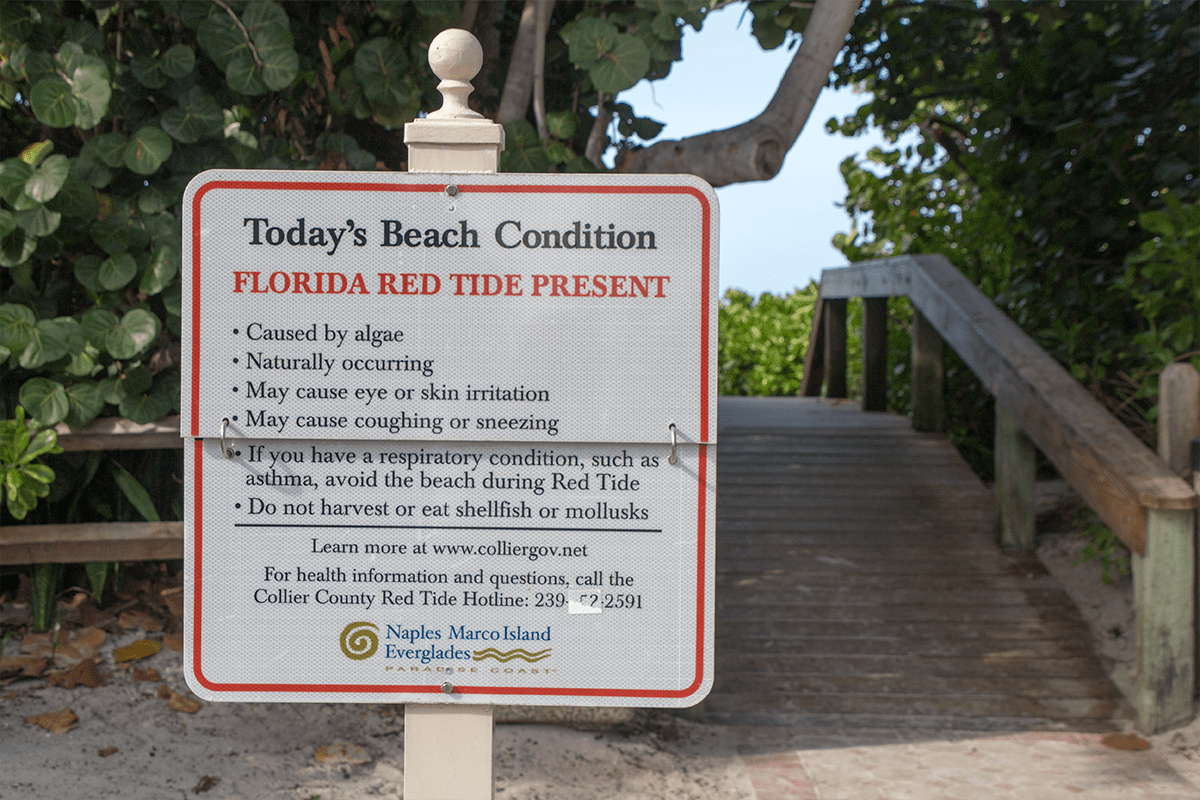Captains for Clean Water red tide claims shut down by group’s member, experts

FORT MYERS, Fla. (FLV) – Experts and a Captains for Clean Water board member said that Lake Okeechobee discharges are not contributing to red tide on the coast, shutting down an opposite claim the Captains for Clean Water co-founder made Wednesday.
Captains for Clean Water Co-Founder Chris Wittman told Bay News 9 that Lake Okeechobee discharges are contributing to red tide in Tampa.
However, experts and Captains for Clean Water Board Member Chauncey Goss said that is not the case.
Wittman claimed in the article that “poor water management” following Hurricane “gave red tide enough power” to travel to Tampa.
“We see those discharges with very nutrient rich, polluted water from Lake Okeechobee being dumped on the coast where there’s a red tide present,” Wittman said. “That’s like throwing fuel on a forest fire.”
However, Captains for Clean Water’s own board member, Chauncey Goss, said he does not believe that the lake’s discharges are adding to red tide.
“It just doesn’t strike me that it would,” Goss said, noting that usually after big hurricanes it is normal for runoff to come off the land.
Goss made the comments as the board chairman of the South Water Management District at the governing board’s meeting March 9.
In fact, Goss said Lake Okeechobee’s current discharges are helpful during Florida’s dry season.
“Right now, the releases that we’re getting are beneficial. We need them,” Goss explained. “We need them. It’s the dry season and upper Caloosahatchee likes to have freshwater.”
Lake Okeechobee water discharges south into the Caloosahatchee River.
Over the years, some critics have claimed the lake is discharging blue-green algae into the Caloosahatchee River, while other experts, such as Dr. Brian Lapointe, have called similar claims “politically motivated.”
Nyla Pipes, executive director for One Florida Foundation, told Florida’s voice that while many people want to blame Lake Okeechobee releases for red tide, the “truth is more complex.”
She explained that Florida begin seeing red tide in mid- October and Lake Okeechobee releases didn’t begin until Nov. 19.
Pipes said the highest concentrations of red tide, which began near Sarasota, have been between Sarasota and Tampa Bay. That area is a “substantial” distance north of the Caloosahatchee River.
“Furthermore, the Caloosahatchee River is getting minimal Lake Okeechobee releases referred to as ‘beneficial releases’ because they keep the estuary from becoming too salty,” Pipes said.
“These are not large slugs of water from Lake Okeechobee in order to lower the lake.”
Pipes said any nutrient-rich runoff from land can exacerbate a bloom. However, she said Hurricane Ian stirred up nutrients from the ocean floor and “washed unimaginable amounts of stormwater and sewage” into the Gulf of Mexico last fall.
That sowed seeds for this season’s algal blooms, she explained.
“We see this after every hurricane, and it’s inaccurate to place blame on any single source such as the management of Lake Okeechobee,” Pipes said.
Sarasota Magazine also reported that the massive amount of water the hurricane dumped carries ingredients that would create a severe harmful algal bloom like red tide.
Water from Hurricane Ian is reportedly making its way out to sea as it carries sediment and pollution.
“All this organic matter and pollution can feed harmful algal blooms,” the report said.
A University of South Florida 2019 article cited a study that said ocean circulation made 2018 the “worst year” for red tide in more than a decade.
“This further demonstrates that the ocean circulation is the major determinant of Florida’s, Karenia brevis harmful algae blooms, dispelling the myth that land-based fertilizers are to blame,” said Robert Weisberg, PhD, Distinguished University Professor of Physical Oceanography.
“While pollutants can exacerbate an existing red tide, they are not the root cause.”



